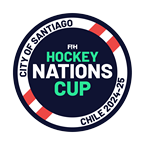
What you require of a hockey pitch depends upon your viewpoint: as a player you will want a pitch that runs fast and true, allowing you to play the best hockey you possibly can. A club administrator will want those qualities, but at a reasonable price and with a long life-span; the groundsman will want an easy maintenance pitch with low irrigation requirements. An additional requirement by players is a forgiving surface to minimise injuries and reduce post-match recovery time.
Paul Kamphuis is general manager of Polytan STI, an Australian-based company that supplies artificial sports pitches across the globe, including the pink and blue pitch at the London Olympics 2012. He says the most significant development in pitch development has been the introduction of texturised monofilament polyethylene yarn. "It ticks all the boxes," he says. "High performance, non-directional play characteristics for fast-paced hockey but with low irrigation requirements, enhanced UV stability and excellent durability."
Developments in artificial pitches has made them more accessible to players everywhere, a fact highlighted by recent pitch openings in Costa Rica and Cuba. But even though the cost of installing a new pitch has dropped in relative terms, enabling more installations to take place, each new pitch will throw up its unique challenges. Paul says: "From drought in Australia to dust storms in Beijing, monsoons in India and snow in the UK, we have installed hockey pitches in all sorts of climates and tough conditions. We have a resourceful and experienced team who aren’t scared to think outside the box to overcome obstacles. We have used tents to cover the pitch surface to keep out the rain, helicopters to reduce frost and worked at night to avoid working in excessive heat.
"Another common problem when working in some locations is the local capability to provide civil construction of the pitch infrastructure to the precise tolerances and standards required. To overcome this, we always try to work closely with the local contractors during the construction phase to develop the skills necessary to meet the construction standards required."
Despite these problems, the installation of a pitch can be remarkably swift. The record time for a Polytan STI resurfacing project was four to five weeks, although a more usual resurface project would normally take eight to ten weeks from date of order to complete installation. A new construction would take about five to six months, including design, construction and final installation.
Talking about recent projects, Paul says that the 'Smurf Turf', as the London Olympic pitch was christened, remains one of his favourite projects, not least for the controversy it caused. "The Smurf Turf polarised opinion. There were those who loved the colours and those who didn’t, but either way it made hockey one of the most talked about and broadcast sports of the Olympic Games. Being prepared to take this risk and then see how much additional exposure and promotion this generated for hockey on a global platform was extremely satisfying."
For the future, Paul says that climate change is likely to provide the biggest challenge, although sustainability is also a big focus for STI. "We recognise that watering plastic grass can sometimes seem irrational and a waste of water," he says. "For this reason, we are continuously striving to reduce the irrigation needs of elite level hockey surfaces."
























